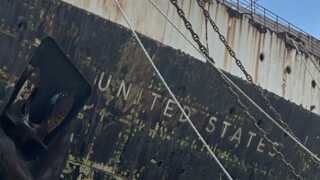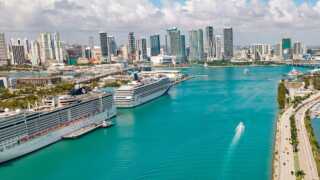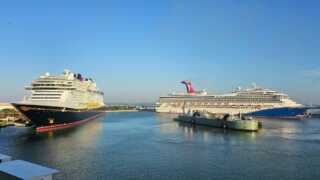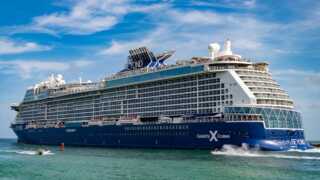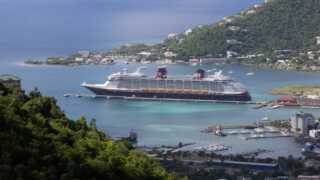Key Aspects:
- Okaloosa County commissioners have approved funding for a comprehensive video production that will document the SS United States’ final voyage and reefing.
- WMV Productions and Gannet Creative House will capture onboard, aerial, and underwater footage of the ship’s tow-out and placement on the seafloor.
- The agreement calls for a live-streamed broadcast and a documentary so the public can witness the transformation.
The long-awaited reefing of the SS United States will be documented in full detail underly a newly approved plan from Okaloosa County, Florida.
County commissioners voted October 21, 2025, to authorize a 50 percent advance payment to two production companies to capture the ocean liner’s final voyage and its placement on an artificial reef site.
WMV Productions, based in Nashville, Tennessee, and Gannet Creative House, of the Destin-Fort Walton Beach area of Northwest Florida, were awarded the project and will receive a total of $67,850.
The agreement ensures that the project will include live-streamed coverage, onboard and aerial drone footage of the tow-out from Mobile, Alabama, and underwater video of the ship’s descent to the seafloor.
A professionally edited documentary is expected within two weeks of the deployment.
As many took to social media over the years to argue the ship should be preserved, one person said of the news, “I am glad it is going to be documented and recorded as it is a piece of history. I know there are many who will call this a disgrace or a disservice to the ship but this is the better outcome than being scrapped.”
Read Also: Where Do Cruise Ships Go To Die? The Dismantling Process
The filming initiative, managed directly by Okaloosa County, is separate from a documentary project under development by the SS United States Conservancy.
The county’s production will serve as the official recording for the reefing initiative, marking a new chapter for the storied ocean liner once known as “America’s Flagship.”
The Final Move
The SS United States was once the pride of America’s passenger fleet. The superliner was built at the height of the post-war era in Newport News, Virginia, and launched in 1952.
SS United States Departure (Photo Credit: SS United States Conservancy – Hampton Roads Chapter)
The 53,000-gross-ton vessel spanned 990 feet and could carry more than 1,900 passengers across the Atlantic Ocean in record time.
In fact, on her maiden voyage, she shattered the transatlantic speed record, completing the run from New York to Southampton in just 3 days, 10 hours, and 40 minutes – a record that still stands for a commercial ocean liner.
After years of service, falling passenger numbers and the rise of intercontinental jet travel led to her retirement in 1969. The ship was stripped of furnishings and equipment, and, after several redevelopment attempts, she was towed to a berth on the Delaware River in South Philadelphia in 1996.
For nearly three decades, the liner sat there, paint peeling, funnels fading, becoming both a landmark and an eyesore. The nonprofit SS United States Conservancy acquired the vessel in 2011 to prevent scrapping, maintaining it through donations and advocacy.
Despite proposals to restore her as a museum, hotel, or mixed-use attraction, the high cost of renovation proved insurmountable.
By 2024, mounting legal disputes over dockage fees and safety forced a court-ordered mediation, and eventually the decision to move the ship.
The agreement cleared the way for her final voyage from Philadelphia to the Gulf of Mexico. Now, the ocean liner is moving toward the final phase, where she will be sunk to create an artificial reef that will serve as a marine habitat and diving destination off the coast of Florida.
Environmental remediation work is currently underway to clean up hazardous materials, remove interior fittings that must be preserved, and to prepare the ship for towing and sinking. In August 2025, the first of the ship’s iconic funnels was removed, and it will be preserved for a land-based museum near the reefing site.
The exact date and reefing location remain undisclosed for now, with officials citing operational and safety reasons. Both will be announced closer to deployment to avoid crowding or interference during the tow-out.
Appeared first on: Cruisehive.com
